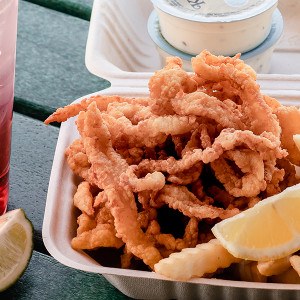Rum Runner
 Dining out as often as we do, it goes without saying that we do the dew a little more often than we should. A dirty martini, a good glass of vino, a nip of limoncello to finish the meal… There’s little we Chowder bloggers won’t imbibe.
Dining out as often as we do, it goes without saying that we do the dew a little more often than we should. A dirty martini, a good glass of vino, a nip of limoncello to finish the meal… There’s little we Chowder bloggers won’t imbibe.
An offer of free cocktails, then, is like my own personal Bat Signal. But last night, I found myself opting out of the Beija rum launch at fact-checker favorite Eastern Standard.
In addition to working late, I just couldn’t psych myself up to drink rum in January—even if it was 60 degrees. For me, rum and tequila are best savored beachside in fruity concoctions with names that end in “punch” and “colada” (which is not to discount the popularity of winter rum drinks, including butterscotchy, aged rums served straight up; Dark & Stormies; and cocktails ending in “nog” or beginning with “hot buttered”). It’s just a personal preference.
But back to the Beija. It bills itself as the world’s first “virgin cane rum,” which makes about as much sense to us as this freaky weather. The bottle’s fine print, however, calls it cachaca—the liquor that forms the base of traditional Brazilian mojitos. What’s the diff? While they both originate from sugar cane, cachaca is made from fermented cane juice, while rum comes from molasses, the byproduct of sugarmaking. That is to say, they’re not the same thing. Wikipedia, 1; Press release, 0.
What relation either one has to Canita, a 190-proof sugar cane liquor I may or may not have smuggled back from Tijuana in my backpack, twice, is unclear. (The first time, I found it in the liquor store; the next time, it had been moved to the pharmacy aisle.)
No matter. I’m laying off the sugar cane bevvies until April, or at least until the mercury hits 65. Oh, wait…..


